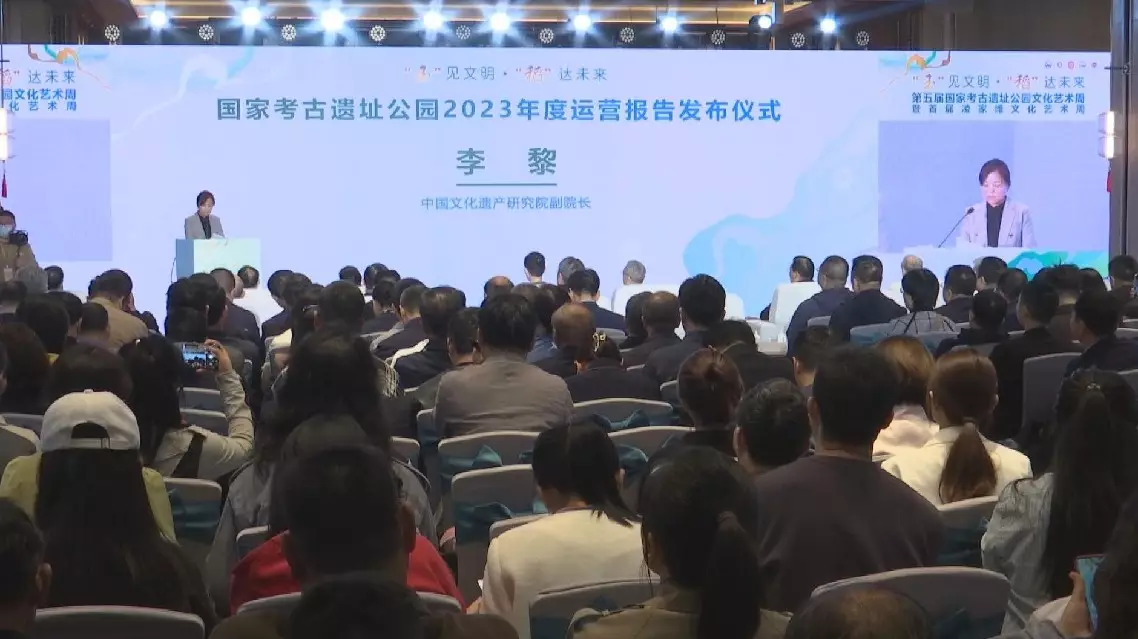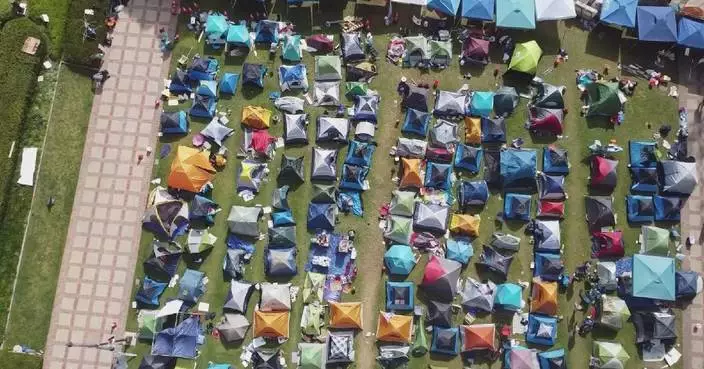China launched the fifth National Archaeological Site Park Culture and Art Week in Ma'anshan City of the central Anhui Province on Thursday, which marks the International Day for Monuments and Sites, also known as the World Heritage Day.
A report on China's 55 archaeological site parks for 2023 was released Wednesday, showing robust growth in both the number of visitors and the revenue generated.
The report was delivered by Li Li, vice president of the Chinese Academy of Cultural Heritage, during a conference at the Lingjiatan relics site in Ma'anshan.
It showed that the annual cumulative revenue of the 55 parks in the country reached approximately 4.48 billion yuan (about 630.8 million U.S. dollars) in 2023, an increase of 1.18 billion yuan from the previous year, of which ticket income increased by about five times. Total tourist visits exceeded 67 million, up 135 percent year on year, according to the report.
The national archaeological parks are a part of China's efforts to protect archaeological ruins that represent Chinese civilization, as well as develop and nurture heritage for research and education.
"The national archaeological parks were built to fulfill these purposes. They ensure sustainable archaeological and research work and the findings can be presented to the world, letting people to learn how ancient yet how modern China is," said An Lei, deputy director of the Institute of Cultural Relics Protection at the China Academy of Cultural Heritage's Planning and Research Department, in an interview with China Global Television Network (CGTN).
A promotional film produced by CGTN on China's archaeological parks was released at Thursday's opening ceremony of the fifth National Archaeological Site Park Culture and Art Week.
"I believe that when we build a national archaeological park, our first goal is to clearly define its roles. Simply put, it is a place to tell stories to the general public. The stories about the history of Chinese civilization are important to us today and in the future," said Chen Tongbin, honorary president of the Architectural History Institute of the China Architecture Design and Research Group.

China launches 5th National Archaeological Site Park Culture and Art Week
With the recent successful launch of the Shenzhou-18 manned spacecraft and return of the Shenzhou-17 crew, China's booming space culture has sparked a surge in tourism at the Dongfeng Aerospace City in north China, the nation's earliest launch site equipped with state-of-the-art facilities.
During the five-day May Day holiday starting on Wednesday, tourists from central and eastern Inner Mongolia Autonomous Region and Beijing are flocking to this aerospace city at the boundary between Jiuquan city in the northwestern province of Gansu and the Ejin Banner in Inner Mongolia, which includes the famous Jiuquan Satellite Launch Center.
"The passenger flow through our station is expected to increase by more than 40 percent than usual, with over 70 percent of the passengers proceeding to the Dongfeng Aerospace City to experience space culture firsthand," said Meng Qingguo, deputy head at Ejin Banner Station.
The spike in tourist volume has prompted quick responses from transportation authorities. At Ejin Banner Station, additional staff have been mobilized at key positions to speed up the ticket checking process and enhance service center efficiency for tourists' convenience.
To accommodate the increase in travelers, six additional trains are now operating on the route from Hohhot to Ejin Banner.
"I'd like to take advantage of this holiday to go to the Dongfeng Aerospace City for a field trip. Now, it's convenient for us to travel there by train. From Hohhot, we can arrive there after just a few hours of sleep," said Duan Yuxuan, a tourist.
"The trains themselves are decorated with space-themed items, creating an immersive atmosphere. Railroaders provide essential information about the Jiuquan Satellite Launch Center and facilitate connections with the reception centers ahead of time, significantly saving time for us," said Sun Jingbo, a tourist.
Families, students and space enthusiasts are driving the boom in space culture-related tourism. At key attractions such as the manned space launch site and historical exhibition hall of this launch center, tourists engage closely with space culture by taking photos and learning about the site's history.
"I was impressed when seeing the successful launch of Shenzhou-18 on television. My family and I took the train from Ulanqab, which is conveniently connected by the increased train services on this route," said Liu Xiaohuan, a tourist.
The Shenzhou-18 manned spaceship was launched from the Jiuquan Satellite Launch Center on April 25 to send three taikonauts to China’s orbiting Tiangong space station for a six-month mission. Five days later, the Shenzhou-17 crew returned to Earth and landed at the Dongfeng landing site after completing their mission.

Tourism booms at China's aerospace city amid space culture fervor










